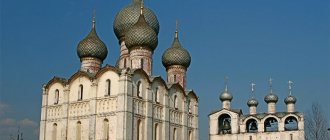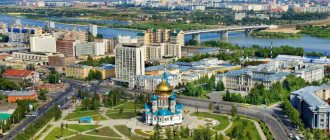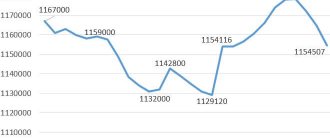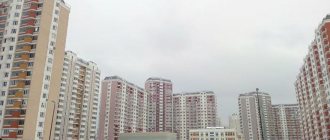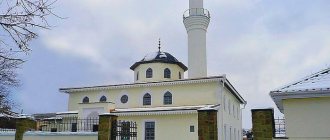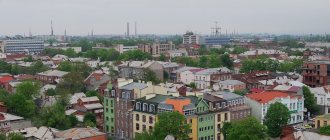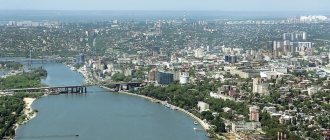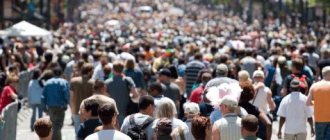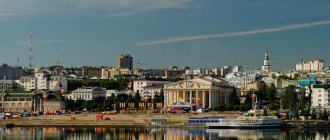The population of Rostov-on-Don today is more than 1 million 100 thousand. It confidently ranks tenth in the list of Russian cities by number of inhabitants. The millionth resident was born in 1987, thanks to which Rostov became a millionaire city. The population of the city of Rostov-on-Don is about 25% of the residents of the entire Rostov region.
Population composition
The ethnic composition of the city has always been the focus of attention of the authorities, but the constant mention in local newspapers that the city is multinational did not clarify the matter. For the first time, city residents were able to find out about their national composition only in 1991, according to the results of the population census, when the information was published.
The population of Rostov-on-Don consists mainly of Russians, of whom about 90%. The rest of the city's residents are of Ukrainian, Armenian, Jewish, Belarusian, Greek, Georgian, Tatar, Korean, Moldavian, Gypsy, Mordovian, Udmurt, and German origin. In total, there are about 105 nationalities in Rostov. This includes the Scythian nationality, to which (according to the results of the last census) 30 residents of the city identified themselves when answering the question about their nationality.
Location and description of Rostov
Rostov is only fifty kilometers from Yaroslavl and is located on the shores of Lake Nero. This is the largest freshwater lake in the region. Archaeologists and historians claim that it was inhabited by people already six thousand years ago and the Slavs came here to fully formed settlements and settlements. Later, the lake was often called Rostov, in honor of the city itself.
The ancient history of Rostov is reflected in a large number of historical monuments. They allowed the city to be included in the country's cultural heritage list. The population of Rostov is very proud of the fact that their hometown is an obligatory stop on the route of travel along the so-called Golden Ring of Russia.
Today in Rostov there are more than one hundred and fifty monuments of federal significance. In addition to them, the population of Rostov can tell you about two hundred more places, imbued with history and related to the cultural monuments of the city. It’s worth visiting Rostov even for its extraordinary beauty, combining ancient mansions with modern buildings. Moreover, all the innovations do not spoil the appearance of the city at all; they fit well into the existing plan and complement the ancient facades of houses and churches.
Natural decline
Nowadays, the population of Rostov-on-Don is constantly increasing due to the following factor: there is a significant increase in migration, which exceeds natural growth.
However, the natural decline of local residents far exceeds the natural increase. This fact is associated with high mortality, which extends to the generation that has not reached retirement age, and this is especially reflected in the male part of the city’s population. Myocardial infarction, strokes, and cancer carry a high mortality rate.
According to these statistics, road accidents and injuries occupy a significant place. The unhealthy lifestyle of Rostovites – smoking and alcoholism – also affects mortality. Reproduction of the population through natural increase is not ensured due to the low birth rate.
Current data
According to published data from Rosstat in 2022, the population of the city is 1,137,904 units, the Rostov agglomeration is 2.7 million (the fifth agglomeration in the country). It is included in the list of the largest settlements in the Russian Federation in terms of the number of permanent inhabitants, taking 9th place.
An important parameter is density. The parameter displays the number of inhabitants/1 km2. The value for 2022 is 3265.15 inhabitants/km2. The area of the city is 348.5 square meters. km.
Population problems
Why is this happening in the city of Rostov-on-Don? Its population is experiencing financial difficulties, which is why they cannot afford their own housing, and if there is no housing, then what kind of children can there be? Also, the city does not have a sufficient number of preschool institutions; young families do not want to have children at all or want to have no more than one. Therefore, the main reason for the reluctance to have at least two children lies in the difficulties of placing a child in kindergarten.
But recently there has been an increase in the number of kindergartens, so there will certainly be one less problem. In the meantime, Rostov-on-Don, whose population is increasing only due to the migration influx, is a city in which mortality prevails over birth rate.
Marriages and divorces[ | ]
Situation for 2013[ | ]
As of 2013, the number of couples wishing to get married increased to 3% (7336 registrations). For four months (May 14) 2013, the civil registry office of the Rostov region registered 53,263 acts of civil status, which is 3.6% more than for the same period last year 2012.
Situation for 2009[ | ]
As of May 7, 2009, 1 thousand 569 marriages were registered, which is 53 marriages more than in 2008. The marriage rate increased to 6.1%. Since the beginning of 2009, 1 thousand 282 divorces have been registered. The divorce rate remained unchanged at 5.0%.
Situation for 2008[ | ]
In 2008, 1,516 marriages were registered, which is 181 marriages, or 13.6% more than in 2007. The marriage rate increased by 11.5% and amounted to 5.8% compared to 5.2% in 2007.
During the same time, 1,310 divorces were registered, which is 83 divorces, or 6% less than in 2007. The divorce rate was 5% versus 5.4% in 2007.
As night approaches, the city's population decreases sharply
Despite the fact that the city has a million population, residents of the surrounding rural areas, as well as smaller cities, flock here every day to work. There are jobs here for Aksay residents, Novocherkassk residents, Shakhty residents, and Batai residents. Why is that? The fact is that the city of Rostov-on-Don attracts the population of the surrounding area with more competitive salaries.
Population density and ethnic composition
At the moment, the residents of Rostov are represented mainly by Russians. They make up more than 95% of the city's population. The remaining 5% was almost evenly distributed among the nations that came here from other regions of Russia. They do not constitute a static value, so they are rarely taken into account in official data.
The population density is 1,970 people per square kilometer, which is quite average in the country among cities with a population of less than one hundred thousand people.
Population growth chart
The table below shows the rate of population growth in recent years in the city of Rostov-on-Don. The population in 2014 has increased by 6 thousand people. An increase is also planned in 2015, in particular due to refugees from Ukraine. The table has rounded values.
| Year | Population | Growth |
| 2013 | 1 million 104 thousand | — |
| 2014 | 1 million 110 thousand | 6 thousand |
| 2015 | 1 million 115 thousand | 5 thousand |
Population by region[ | ]
| Area | 1970 | 1979 | 1989 | 2002 | 2010 |
| Voroshilovsky | — | — | &&&&&&&&&&&&0192.900000192,9 | &&&&&&&&&&&&0203.300000203,3 | &&&&&&&&&&&&0212.700000212,7 |
| Leninist | &&&&&&&&&&&&0103.800000103,8 | &&&&&&&&&&&&&090.60000090,6 | &&&&&&&&&&&&&079.80000079,8 | &&&&&&&&&&&&&081.80000081,8 | &&&&&&&&&&&&&078.50000078,5 |
| Proletarian | &&&&&&&&&&&&0122.400000122,4 | &&&&&&&&&&&&0132.200000132,2 | &&&&&&&&&&&&0129.600000129,6 | &&&&&&&&&&&&0132.200000132,2 | &&&&&&&&&&&&0122.200000122,2 |
| Railway | &&&&&&&&&&&&0170.600000170,6 | &&&&&&&&&&&&0100.800000100,8 | &&&&&&&&&&&&&095.30000095,3 | &&&&&&&&&&&&&095.30000095,3 | &&&&&&&&&&&&0103.200000103,2 |
| October | &&&&&&&&&&&&0154.700000154,7 | &&&&&&&&&&&&0197.800000197,8 | &&&&&&&&&&&&0137.600000137,6 | &&&&&&&&&&&&0153.600000153,6 | &&&&&&&&&&&&0160.600000160,6 |
| Soviet | — | &&&&&&&&&&&&0146.600000146,6 | &&&&&&&&&&&&0148.200000148,2 | &&&&&&&&&&&&0166.200000166,2 | &&&&&&&&&&&&0170.300000170,3 |
| Kirovsky | &&&&&&&&&&&&&098.50000098,5 | &&&&&&&&&&&&&094.10000094,1 | &&&&&&&&&&&&&081.50000081,5 | &&&&&&&&&&&&&069.&&&&&069,0 | &&&&&&&&&&&&&066.&&&&&066,0 |
| Pervomaisky | &&&&&&&&&&&&0138.700000138,7 | &&&&&&&&&&&&0171.700000171,7 | &&&&&&&&&&&&0154.200000154,2 | &&&&&&&&&&&&0166.600000166,6 | &&&&&&&&&&&&0176.400000176,4 |
City districts
Rostov-on-Don is divided into eight districts. Thanks to this, high-quality service is provided to people and convenient operation of the infrastructure is ensured. In turn, they are divided into microdistricts, which have unofficial names. The new areas are mostly residential and continue to be devastated. They have everything for a fulfilling life for Rostov residents: parks, squares, shops, schools, kindergartens. Each yard is equipped with a playground, perfectly equipped for children's games.
It’s interesting that Rostovites have developed unofficial names for their districts over time. If you, for example, ask a local resident how to get to the Leninsky district, then they will tell you where exactly you need to go: to the Center, to the New Settlement or to Nakhalovka? Many names arose in pre-revolutionary times and reflected the characteristics of the inhabitants of the area.
For example, Nakhalovka and New Settlement arose as a result of self-development, the city authorities could not do anything about it except to recognize these villages with the workers living there and integrate them into Rostov. And until now, the private sector with cozy courtyards predominates in these villages, despite the huge construction taking place in the city. How and how do the districts of the city of Rostov-on-Don live, how many people live in them?
Rostov-on-Don
Rostov-on-Don is the capital of the Don region and the Southern Federal District
Symbolism
| Flag | Coat of arms |
Administration
346007, Rostov-on-Don, Bolshaya Sadovaya st., 47
tel., fax
Housing and communal services hotline
Head of the city administration
Logvinenko Alexey Valentinovich
Chairman of the City Duma - mayor of the city
Zinaida Vasilievna Neyarokhina
Geography
Rostov-on-Don is the administrative center of the Rostov region and the Southern Federal District of Russia with a population of more than 1 million people.
The city is located in the southeast of the East European Plain, on the banks of the Don River, 46 km from its confluence with the Sea of Azov, in the center of transport routes providing access to three seas - the Black, Azov, Caspian - and direct contacts with the entire European part of the CIS, Transcaucasia, the Middle East and the Mediterranean. The area of the city is 348.5 sq. km, the distance to Moscow is 1076 km.
Story
The founding date of Rostov-on-Don is considered to be 1749, when the Russian Empress Elizaveta Petrovna signed a Decree establishing a state customs office at the mouth of the Temernik River. After this, a port appeared here, and in 1761 the construction of the military fortress of St. Demetrius of Rostov began. The favorable geographical position contributed to the economic development of Rostov. By its 100th anniversary, the city had about 15 thousand inhabitants, and by the 20th century over 110 thousand people lived in it. The basis of the economy of Rostov-on-Don was trade, and the city itself was called a merchant city. However, by the beginning of the 20th century, there were already more than 100 enterprises operating in it, every third of which belonged to foreign capital. Until 1917, Rostov-on-Don was the third city in Russia in terms of foreign trade turnover. By the end of the 30s, in terms of population and level of economic development, it was one of the ten largest cities in the Soviet Union.
Rostov-on-Don entered the heroic chronicle of the Great Patriotic War as a city where the Red Army went from defense to offensive. Rostov-on-Don was a strategic goal in the plans of the fascist command - it was not for nothing that Goebbels called it “the gates of the Caucasus.” But it was here, at the “gates of the Caucasus,” in November 1941 that the Wehrmacht suffered its first major defeat. During the occupation of the city, the Nazis shot and tortured tens of thousands of civilians, and drove about 50 thousand people into slavery. The central areas of the city were turned into ruins, the buildings of theaters, institutes, schools and hospitals were blown up and burned. Of the 270 factories and factories, only six survived. However, thanks to the dedicated work of Rostovites, the capital of the Don was restored from ruins and became even more beautiful.
In 1970, by Decree of the Supreme Soviet of the USSR, the city of Rostov-on-Don was awarded the Order of Lenin; in 1982, by Decree of the Presidium of the Supreme Soviet of the USSR, it was awarded the Order of the Patriotic War, 1st degree. On the eve of the celebration of the 63rd anniversary of Victory in the Great Patriotic War, Rostov-on-Don was awarded the honorary title “City of Military Glory”. Today Rostov-on-Don is one of the largest megacities of modern Russia, a political, economic, cultural and scientific center of the south of the country, an important junction of transport routes.
Economy
Positioning as the capital of southern Russia and the localization in the city of large industrial enterprises and structures of a southern Russian scale (management of SKZD, etc.) determines an additional concentration of jobs in Rostov-on-Don, provides an increased level of economic activity and investment attractiveness.
Rostov-on-Don is the eighth most populous city in the Russian Federation (excluding the cities of Moscow and St. Petersburg) and stands out noticeably among Russian cities with a population of over a million, ranking first in the number of individual entrepreneurs per thousand residents. The city is among the top five in terms of housing commissioning and budgetary provision per capita.
Based on the results of a competition held by the Club of Municipal Leaders (KRMS) in 2022, the city of Rostov-on-Don was awarded a badge of honor and a diploma in the category “100 Growing Municipal Economies of Russia.”
A factor favoring the socio-economic development of the city is its positioning as the “core” of the Rostov agglomeration with a demographic potential of up to 2.3 million people, forming the largest local consumer market in the south of Russia, which concentrates a significant part of the scientific, educational, industrial and financial -investment potential of the region.
In a popular vote among Russian cities with a developed IT infrastructure, a good base for training specialists, promising projects and startups, Rostov-on-Don received the title of IT capital of Russia.
Culture
There are 220 cultural and art institutions in Rostov, creative unions and national cultural societies.
At different times, such outstanding writers as A. Solzhenitsyn, M. Nalbandyan, M. Shaginyan, V. Panova, A. Fadeev, artists M. Grekov, M. Saryan and V. Shcheblanov, composers and musicians A. lived and worked in the city. Artamonov and K. Nazaretov, actors Y. Zavadsky and V. Maretskaya. Rostov-on-Don is the birthplace of the Russian ballerina O. Spesivtseva, the outstanding singer of the 20th century I. Yuryeva, and People's Artist of the USSR R. Plyatt.
Rostov-on-Don is a major educational and scientific center. There are 22 institutions of higher professional education here, with more than 130 thousand students.
In Rostov-on-Don there are 4 theaters, two of which are academic, 4 museums, the largest Don State Public Library in the south of the country, a state circus, a regional philharmonic society, the Rostov State Conservatory (Academy) named after. S.V. Rachmaninov, Rostov-on-Don branch of the St. Petersburg State University of Culture and Arts, college of arts, college of culture, exhibition halls of artists.
One of the largest zoos in Europe has been operating in Rostov-on-Don for 94 years. This corner of fauna, covering an area of 60 hectares, is inhabited by about 5 thousand individuals, including more than 500 species of rare animals, birds and reptiles, more than 180 of which are listed in the Red Book. The Botanical Garden is considered one of the largest gardens in Russia, with an area of 161 hectares.
Rostov-on-Don is also one of the largest jazz centers in the country. It is here, like nowhere else in the world, that the basis of pop-jazz education is strong, which was laid in the early 1980s by the country’s first “professor of jazz” Kim Nazaretov, who opened the department of pop-jazz music at the Rostov Conservatory. The city has a unique, the only children's jazz school named after K. Nazaretov in the country.
It has become a good tradition to hold in Rostov-on-Don the theater festivals “Minifest”, “Russian Comedy”, international jazz festivals, the International Festival “Accordion Plus”, the competition of children and youth pop performers “Stars of Rostov”, young composers and other competitions of all genres folk art.
In 2022, the First Merchant Festival named after. A.P. Chekhov “In the City Garden”, dedicated to the 272nd anniversary of the founding of the city of Rostov-on-Don.
Attractions
Sights of Rostov-on-Don
Voroshilovsky
The district is home to 212 thousand inhabitants. In its north there is the Automobile Assembly Village, where there was previously a plant of the same name. Houses were built here, its workers lived here, and their children live here now. Initially, a dacha village for city residents was planned here, but the families of workers grew larger and young people went to live in apartments that were given to them from production, while the old people remained in their dachas. Another village in this part of the city is Myasnikovan. It also consists of the private sector, mostly Armenians lived here.
There are six higher educational institutions, ten large industrial enterprises, four sports schools, kindergartens and schools in the region. Voroshilovsky district is central. You can buy a one-room apartment here for 2.7 million rubles. The residential neighborhood is Severny, where most of the area's housing is located.
Railway
Located along the river, in this area of the city of Rostov-on-Don the population is 103 thousand people. There are two stations here - Main and Prigorodny. On the railway, people living nearby work in depots and workshops. The old village is located a little to the north and is called Lendvorets. The name comes from the house of culture of railway workers named after Lenin. The village is still unprepossessing, with old houses huddled on the hillside, but nevertheless it is very green and clean.
Two villages, Nizhnegnilovskaya and Verkhnegnilovskaya, located on the right bank, took their name from the village, which was previously located not far from the city, and then became part of it. This area is considered unpromising, so young people try to leave it. One-room apartments cost from 1.9 million rubles.
Population dynamics[ | ]
According to official data from the Federal State Statistics Service, the dynamics of the urban population are as follows:
| Population | |||||||||
| 1811[5] | 1840[5] | 1856[5] | 1863[5] | 1897[6] | 1914[5] | 1923[5] | 1926[6] | 1931[7] | 1939[8] |
| 4000 | ↗12 600 | →12 600 | ↗29 300 | ↗119 000 | ↗172 300 | ↗231 400 | ↗308 000 | ↗425 120 | ↗502 928 |
| 1956[9] | 1959[10] | 1962[5] | 1967[5] | 1970[11] | 1973[5] | 1975[12] | 1976[13] | 1979[14] | 1982[5] |
| ↗552 000 | ↗599 542 | ↗661 000 | ↗757 000 | ↗788 827 | ↗845 000 | ↗898 000 | →898 000 | ↗934 095 | ↗966 000 |
| 1985[15] | 1986[13] | 1987[16] | 1989[17] | 1990[18] | 1991[13] | 1992[13] | 1993[13] | 1994[13] | 1995[15] |
| ↗980 000 | ↗991 000 | ↗1 004 000 | ↗1 019 305 | ↘1 013 000 | ↗1 028 000 | ↘1 027 000 | ↘1 025 000 | ↘1 023 000 | ↘1 014 000 |
| 1996[15] | 1997[19] | 1998[15] | 1999[20] | 2000[21] | 2001[15] | 2002[22] | 2003[5] | 2004 | 2005[23] |
| ↘1 013 000 | ↗1 023 000 | ↘1 009 000 | ↗1 017 300 | ↘1 012 700 | ↘997 800 | ↗1 068 267 | ↗1 068 300 | ↘1 062 000 | ↘1 058 000 |
| 2006[24] | 2007[25] | 2008[26] | 2009[27] | 2010[28] | 2011[29] | 2012[30] | 2013[31] | 2014[32] | 2015[33] |
| ↘1 054 800 | ↘1 051 600 | ↘1 048 700 | ↗1 048 991 | ↗1 089 261 | ↗1 091 544 | ↗1 096 448 | ↗1 103 733 | ↗1 109 835 | ↗1 114 806 |
| 2016[34] | 2017[35] | 2018[36] | 2019[37] | 2020[38] | 2021[1] | ||||
| ↗1 119 875 | ↗1 125 299 | ↗1 130 305 | ↗1 133 307 | ↗1 137 904 | ↘1 137 704 | ||||
Soviet
The second unofficial name is Western, since the district encloses the city from the west. It has 170 thousand inhabitants, divided into microdistricts: ZZhM, Leventsovka, Zapadny. Leventsovka is the name of a former village that has turned into a luxurious residential area. There are shops, clinics, magnificent squares and parks, as well as schools and kindergartens. Thanks to the latest discoveries of architects, as well as sunny colors, the houses have become an example of integrated development of the city. Industry is developed in the area, there is a chemical plant, a dairy plant, a cold storage plant and others. The prices here are as follows: a one-room apartment starts from 2.3 million rubles.
Rostov the Great: brief historical background
Analysts' data suggest that Rostov is basically a mono-ethnic city. But few people know that this tradition did not always exist. We have already said that on the shores of the lake lived the Merya tribes, who reacted very favorably to the arrival of the Eastern Slavs on their lands. Moreover, many archaeologists claim that Rostov was literally a city divided into two parts. The Slavs settled in one, and the other was given to the indigenous peoples. Moreover, the city residents lived very peacefully, despite religious differences. The Slavs, who were Christians, built churches in their part of Rostov and did not impose their beliefs on the pagan tribes.
Over time, many other tribes began to flock to Rostov for permanent residence. The population has become even more diverse, but never in the entire history of the city has there been interethnic strife. This helped to form a single component of the city - Rostovites who know how to unite and coexist peacefully on the same territory.
Kirovsky
This is the old center of Rostov. There are 66 thousand inhabitants here and a large number of administrative buildings of city and regional significance are concentrated, as well as the headquarters of large companies, banks, and cafes. From the outside, all the buildings look very decent. The main streets are devoid of greenery; there is a catastrophic lack of trees. In summer it is impossible to move on hot asphalt. Another problem is the condition of old housing. If you enter the courtyard from the main streets, you will notice a great contrast - the bright facade and the shabby rear appearance of the buildings. The cost of housing in this area is the highest - from 3 million rubles.
History of the city
On the territory of modern Rostov, archaeologists have found the remains of settlements of ancient people dating back to three thousand years BC. But the official history of the settlement dates back to the time of Peter I. The Russian autocrat, during the Azov campaigns of the seventeenth century, appreciated the strategic importance of these territories. He wanted to build a fortress here to protect Russian lands from attacks by the Turks and Tatars, but for certain foreign policy reasons he was unable to do this.
Therefore, Rostovites consider the founding date of the city to be December 1749. At this time, Empress Elizabeth issued a decree on the creation of the Temernitsa customs house, which, by the will of fate, was built on the site of today's metropolis.
Oktyabrsky and Pervomaisky
The Oktyabrsky district of the city of Rostov-on-Don, whose population in 2014 was 160 thousand inhabitants, was built up in the post-war period and continues to be built up to this day. Divided into Kamenka, Voenved, Rabochy Gorodok. The majority of medical and preventive institutions and scientific and educational institutions are located here (2 universities and 6 research institutes). Apartments are sold at prices starting from 1.7 million rubles.
Pervomaisky with 176 thousand inhabitants includes the villages of Frunze, Selmash, Ordzhonikidze and Ordzhonikidze two. They grew up after earning . Previously, the private sector dominated here, but new buildings have displaced it. The city airport is located here, as well as the entrance to the city from Moscow. Housing - from 1.8 million rubles.
Gender and age
To obtain an accurate demographic picture, it is necessary to analyze the gender and age composition. According to official data provided by Rostovstat, the proportion of male citizens is 46.4%. The share of women is, respectively, 53.6%. The number of men, according to official statistics, is gradually increasing.
Today in the Rostov region, per 1000 citizens of working age there are 806 residents whose age is above/below the working age. The share of children and adolescents is 17%. Representatives of the older age group – 26.7% of city residents.
Data for the Rostov region
